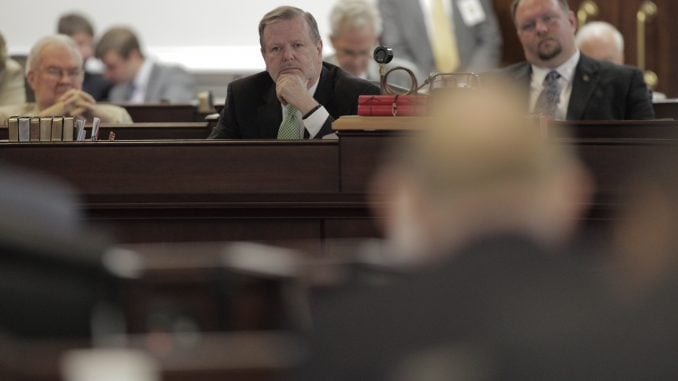
State Senate leader Phil Berger spoke to reporters May 9 about the Senate’s budget plan, which then passed the upper chamber May 12. In the press conference, Berger spoke at several different points to what he saw as similarities between the Senate budget and Gov. Roy Cooper’s budget proposal.”In large part, what you’ll find is that in this budget, and in Gov. Cooper’s budget proposal, are many of the same funding priorities,” Berger said. “The difference is simply different spending levels.”Is Berger right? There’s no simple way to answer that question, but there are several ways the two budgets can be examined.Overall, and in most areas, the Senate budget doesn’t spend as much as Cooper’s. But there are exceptions. Berger’s plan includes $150 million for Hurricane Matthew relief while Cooper included $115 million, for instance. The Senate budget also included more money for transportation infrastructure than the governor. But these spending differences are small compared to the total outlay, considering that both plans spend more than $22 billion. And some of the difference might simply be due to timing.The governor must submit a budget proposal before the legislature, in early March. Legislators can wait until after the April 15 tax filing deadline to propose their plan, which means they can have much more confidence in the fiscal shape of the state. The reason is that the “consensus forecast,” the revenue estimate of the executive branch’s Office of State Budget and Management and the legislature’s Fiscal Research Division, comes out in early February, and then again in early May. And while the surplus estimate changed only about $60 million between the February and May estimates this year, the jump in the confidence in the forecast is enormous. May is that much closer to the June 30 end of the fiscal year, of course, but the confidence boost is mostly because the May estimate can include the tax filing information of most North Carolinians.Back to the budgets. State budgets are generally separated into six functional areas: education, general government, health and human services, justice and public safety, natural and economic resources, and capital improvements. A seventh area is a combination of debt service, reserves, and adjustments.Education is the largest slice of both Berger and Cooper’s pies. The Senate budget increases teacher salaries by 9.5 percent over two years, while Cooper’s plan gives raises of 5 percent each year (both include raises for principals as well). In percentage terms, Cooper’s budget spends 56.8337 percent on all levels of education. Berger’s budget spends 56.7868 percent on those items, or a difference of 0.0469 percentage points from the governor’s proposal (56.8337 minus 56.7868).After education, the next largest outlay is for health and human services, where Cooper spends more on a raw dollar basis but Berger spends more as a percentage (22.7738 percent for Cooper versus 22.8914 percent for Berger).Looking down the line of priority differences in the six functional areas, the smallest difference is in education and the largest in natural and economic resources, where Cooper would spend 3.0247 percent of his $23.48 billion budget and Berger would spend 2.4359 percent of his $22.87 billion, for a difference of 0.5888 percentage points. The difference is largely a result of the Senate’s decision to eliminate a division in the environmental agency, continuing the trend to make that agency as purely regulatory as possible.So while there are real policy differences between the budgets, Berger is largely correct that the priorities are the same and the funding levels are different. The spending differences are attributable to philosophical differences the Senate would return much of the $580.5 million surplus to citizens in the form of tax cuts, while Cooper would keep that money and make modest increases in the size of government instead.In the end, what Cooper wants is mostly irrelevant. It is the budget plan from the House of Representatives that matters now, since the Republican-controlled General Assembly will override Cooper’s veto of their final budget.That’s why Berger could appear so conciliatory toward the governor’s budget, while Cooper and Democratic senators decried the Senate plan as “prioritizing the wealthy over the middle class.”Portraying the Senate tax plan, which would cut taxes for almost all taxpayers and remove 94,000 of the state’s poorest taxpayers from the income tax rolls entirely, as a boon for the rich is a tough rhetorical row to hoe. But facing supermajorities in the legislature, rhetoric is about all the Democrats have right now. Drew Elliot is a member of the North State Journal’s editorial board, separate from the news staff. Unlike other newspapers, the North State Journal does not publish unsigned editorials; the author or authors of every editorial, letter, op-ed, and column is prominently displayed. To submit a letter or op-ed, see our submission guidelines.



